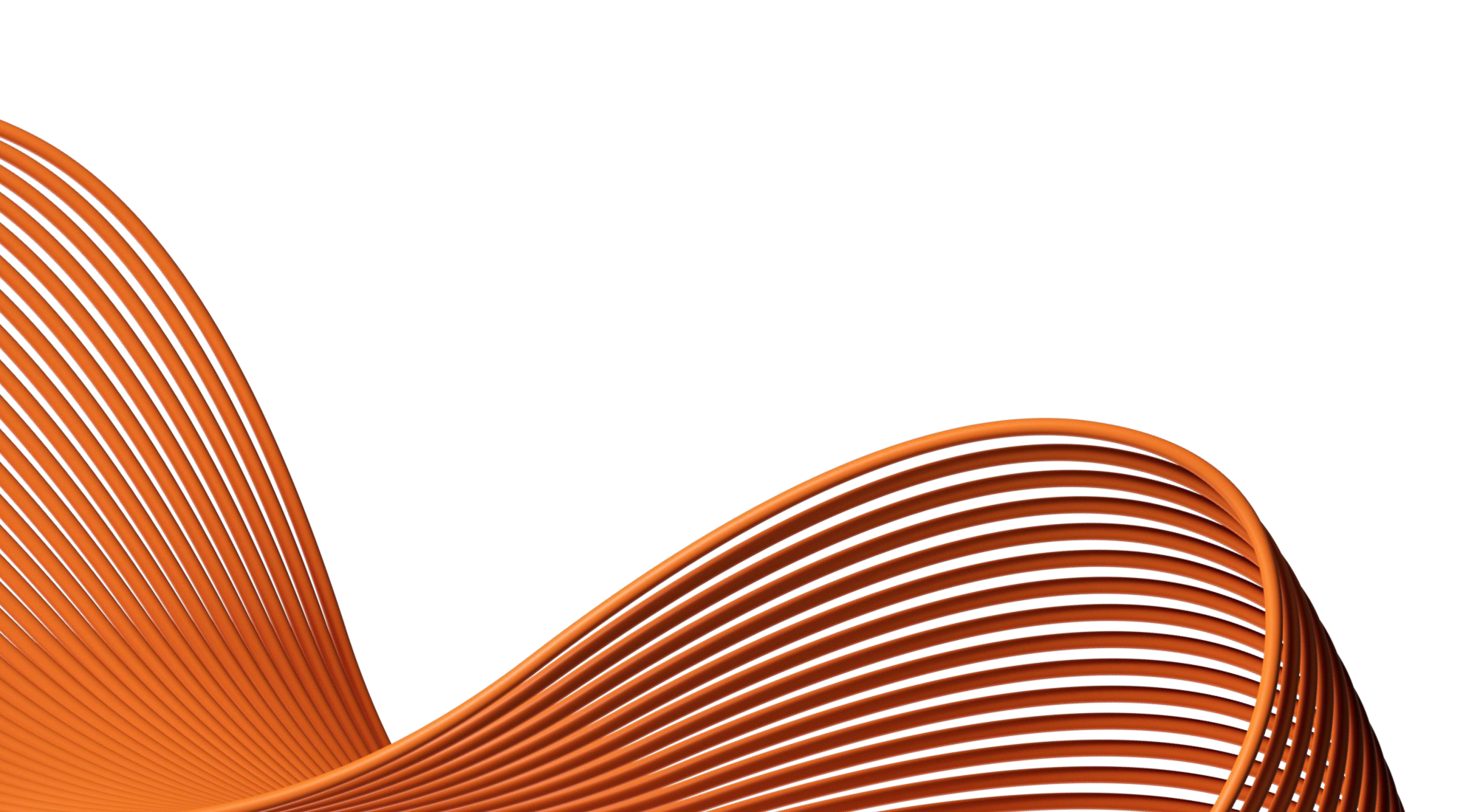- Our Products
- Upper Extremity
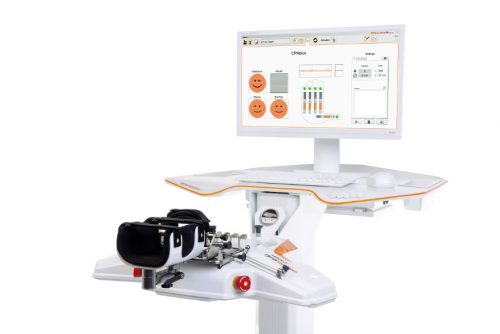 Amadeo Finger-Hand-Rehabilitation
Amadeo Finger-Hand-Rehabilitation
Amadeo is giving hands back their grip and fingers their finesse. Patients who are barely able or unable to grasp can perform hundreds of robot-assisted grasping movements. It won’t train a new Mozart. But it will help patients return to the piano, handwriting Christmas cards, and grabbing life firmly by the horns.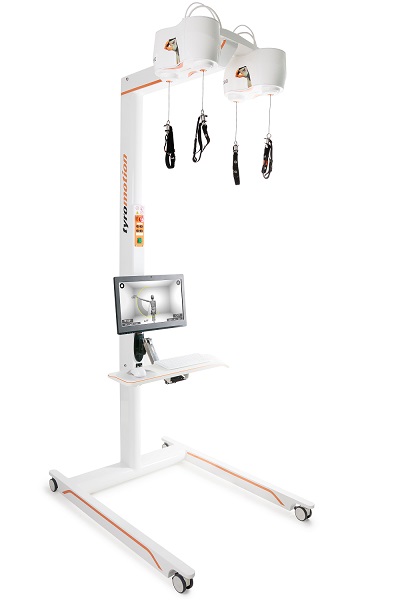 DiegoShoulder-Arm-Rehabiliation
DiegoShoulder-Arm-Rehabiliation
Diego is designed to strengthen what’s important. Whether proximal or distal training, Diego purposefully supports the rehabilitation of natural motion, allows the handling of everyday objects to be relearned, and is usable by adults and children alike.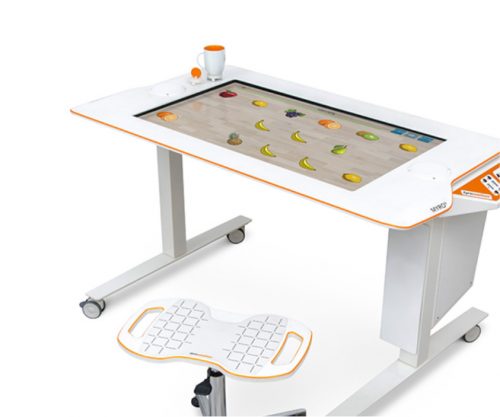 Myro Interactive and task-specific therapy
Myro Interactive and task-specific therapy
Myro is made for making humans get better! The sensor-based surface enables task-oriented rehabilitation with real objects, trains the patient’s cognitive abilities, and improves motor abilities of the upper extremity.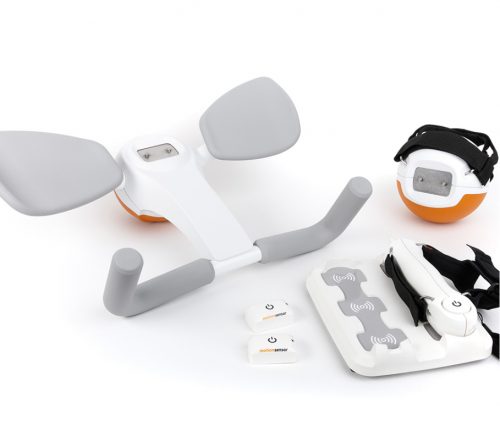 Pablo Upper Extremity Rehabilitation
Pablo Upper Extremity Rehabilitation
As a multifunctional rehabilitation device with comprehensive accessories, Pablo enhances classical therapy exercises with biofeedback, objective assessments, and gamification. It won´t train the next Picasso. But it will help patients to take back control of their lives.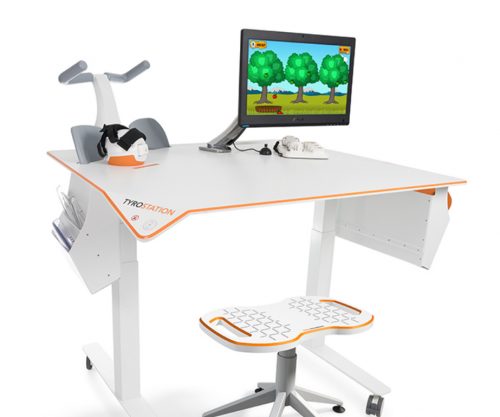 Tyrostation The perfect therapy setting
Tyrostation The perfect therapy setting
The Tyrostation is home to all components of Pablo and Tymo and provides ergonomic adaptability for patients. Sometimes, it´s about the little things in life – or therapy.
- Lower Extremity
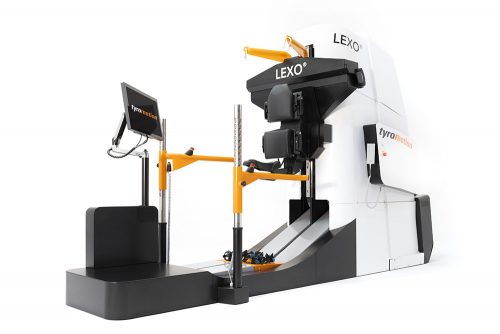 LexoGait and Locomotion
LexoGait and Locomotion
Lexo is a revolutionary gait trainer and impresses with fast setup, high patient activity and optimal trunk support. It encourages active participation and enables therapists to focus fully on their patients.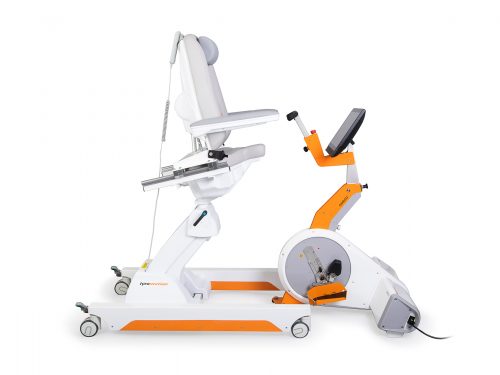 Omego Plus Gait training for the goals across all phases
Omego Plus Gait training for the goals across all phases
More than just a therapy bike! Omego Plus combines uni- and bilateral leg training, leg press, stepper, cycling & foot lift training in one device. Stride stronger with Omego Plus!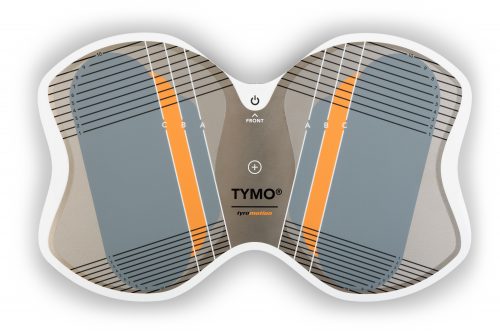 Tymo Balance training and postural control
Tymo Balance training and postural control
Small but powerful! Tymo is a versatile measurement and therapy system for the whole body. In addition to the standing position, Tymo offers a wide range of options for maximum variety during therapy.
- MTT-Line
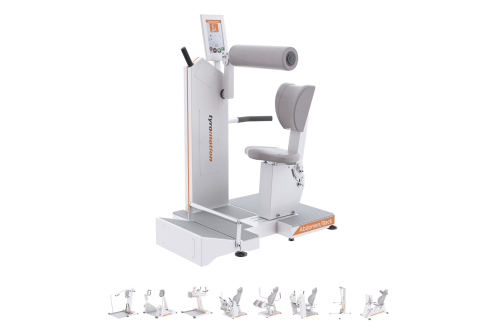 MTT-LineMedical training therapy
MTT-LineMedical training therapy
Get back in the game with the MTT-Line! The Medical Training Therapy devices are specifically designed to strengthen the six major muscle groups of the human body. Barrier free and maximum adjustability make the devices accessible for all types of patients.
- Software
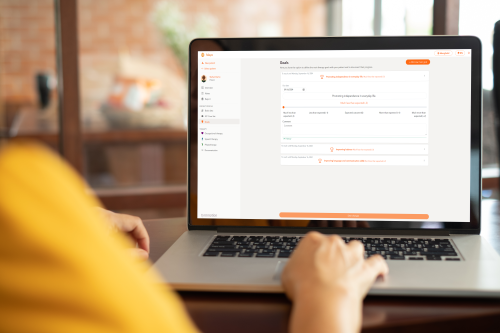 Maya Therapy Platform
Maya Therapy Platform
Maya reduces paperwork, standardizes documentation, and automates reporting, making administration effortless and efficient. Designed for therapists to work wonders!
- Upper Extremity
Health
“Mirror, mirror in my hand!” How mirror box therapy can support stroke rehabilitation
3. January 2022 ● 6 min. Reading time
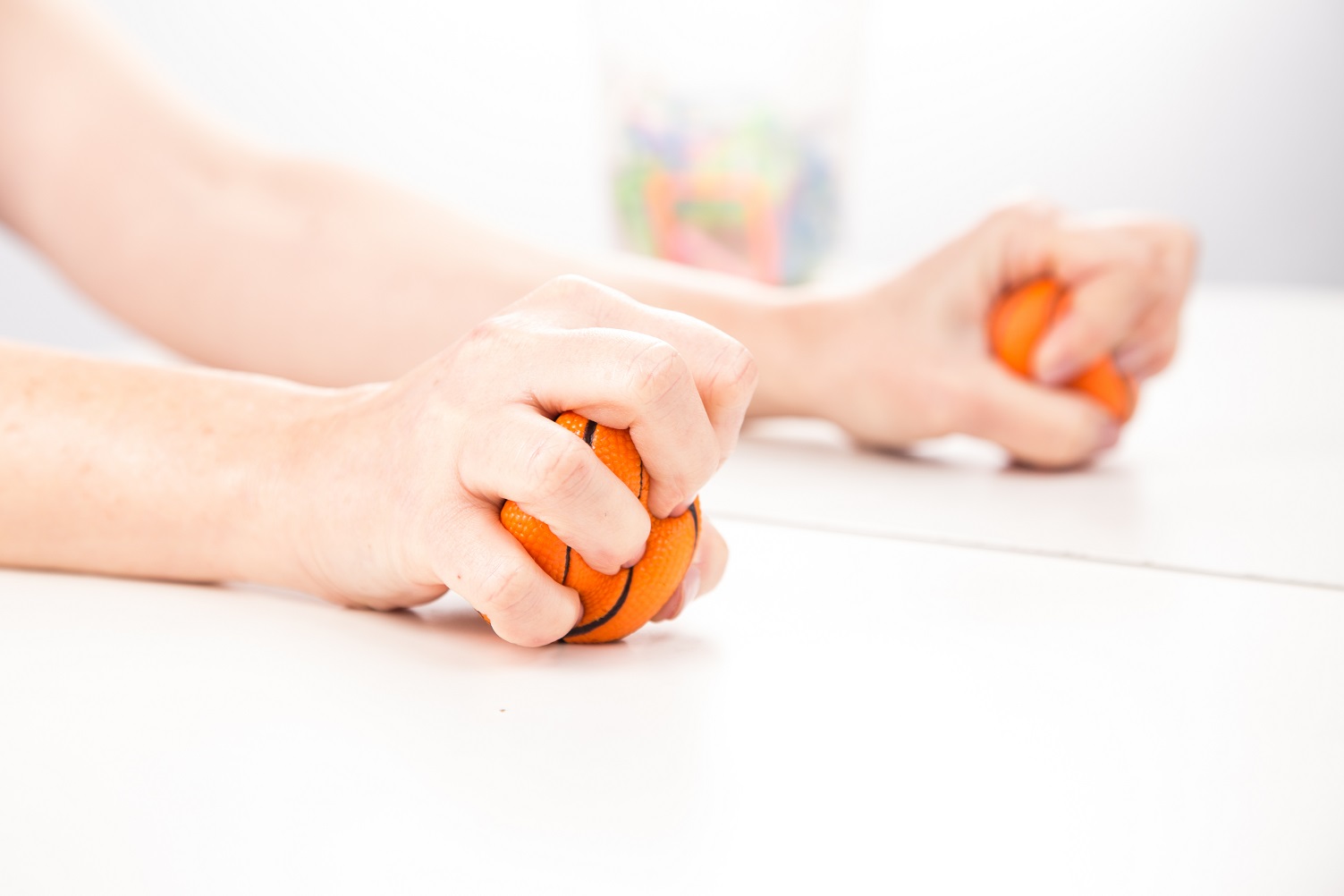
What is mirror box therapy?
In occupational therapy, mirror box therapy is used when limbs are affected by an impairment, such as after a stroke.
The patient sits in front of a mirror which is placed between the arms or legs. The reflecting side is aimed at the healthy or less-affected limb.
The brain gets tricked by using the mirror image of the less-affected arm or leg. This illusion creates the impression that the affected side, located behind the mirror, can also perform the movement without problems or limitations.
Practicing correctly with your arm
Before mirror therapy is started, please check with your respective physician or occupational therapist.
The mirror is placed centrally between the affected limbs – in this case between the two arms. Start by moving your fingers and joints on the less-affected side. You can, for example, rotate your forearm and bend and extend your wrist.
Then move your hand to the side and then back toward your body or rotate your wrist, spread your fingers, or form a fist.
Watch your less-affected hand in the mirror and move the hand behind the mirror, as well as you can, at the same time.
In the next step you carry out more complex movements with your healthy hand. You can, for example, work with a small ball or flip over cards. Pouring rice from one cup into another or drawing with felt-tip pens or a paintbrush would also work.
If your occupational therapist or physiotherapist uses mirror box therapy, the movements of your healthy hand may be guided, and you would be more focused on how the joint feels vs how the movement looks. Whether you see or feel the movement, you should try to move your affected hand the same way it looks in the mirror.
Practicing correctly with your leg
A rolling mirror that you roll between your legs is provided for practicing with your leg.
You should sit in a slightly elevated position so that you can move your legs and feet freely.
Carry out the movements with your less-affected leg and watch it in the mirror. Start by bending and stretching the knee. Remember that you can move your ankle, knee, and hip in every possible direction in isolation.
You should actively move the leg behind the mirror. Your therapist may even help with the movements if you cannot perform them fully.
Occupational therapists and physiotherapists coordinate the exercises very precisely to your abilities. Should you be severely affected, simpler exercises like isolated joint movements will be selected, and the training intensity will be kept low.
Examples of complex movements with your leg or foot are picking up clothes from the ground or rolling a ball beneath your less-affected foot.
The correct training intensity
The correct training intensity is always a topic to discuss with your respective physician or occupational therapist first.
In general, mirror box therapy works particularly well if it is performed over a period of 3-4 weeks. Over that period, you should train in front of a mirror for 20 to 50 minutes and at least five times a week.
The exercises can also be divided into two sessions. Each movement should be repeated up to 30 times. Take a break for a minute before starting the next movement.
The more complex the movements are, the longer they should be practiced.
Most studies suggest that mirror box therapy should always be carried out in addition to physiotherapy or occupational therapy.
Mirror box therapy can easily be done at home as additional therapy. Ask your therapist for exercises that are suitable for you.
What does mirror box therapy improve?
A study hast shown that mirror box therapy as a supplement to conventional occupational therapy and physiotherapy may has a positive effect on therapy success.
Even if spasticity hasn’t changed significantly, patients may make even greater progress with additional mirror box therapy and may act more quickly and confidently than at the start of the treatment.
Patients have also indicated they can feel their paralyzed limbs better after mirror box therapy.
Can mirror box therapy also be used for stroke-induced visual problems?
Visual problems are a common neurological symptom in stroke patients. Those affected may only register half of a room or perceive parts of objects.
A patient with a plate of meat and sides, for example, may only be able see the meat or the sides; they cannot perceive the rest. Visual feedback is limited.
Many studies have addressed treatments for this problem. Initial research into the effects of mirror box therapy show that patients with visual problems who can turn their head enough to see the mirror may benefit from mirror box therapy, both in terms of their visual problems and their difficulty moving.
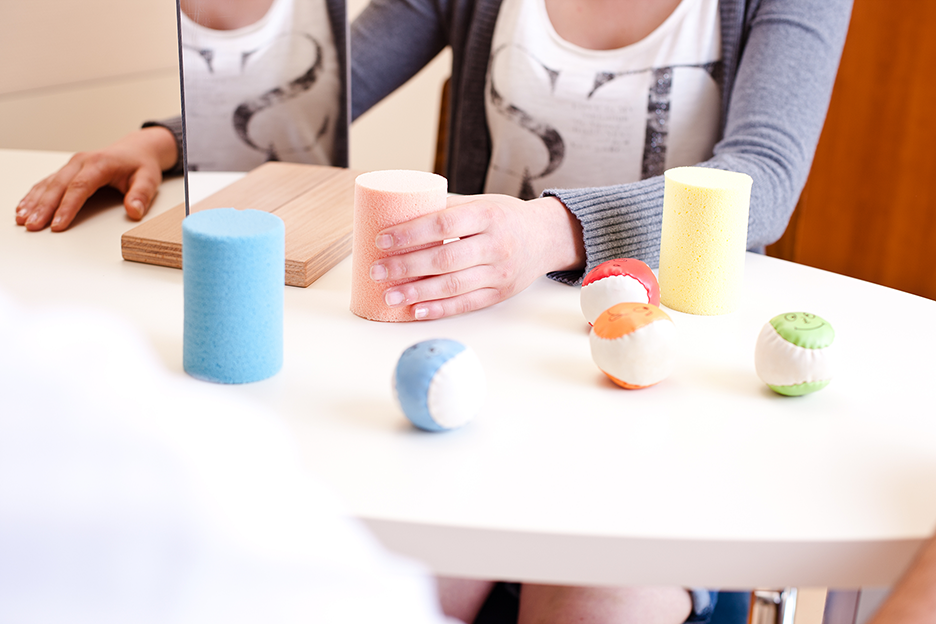
How does mirror box therapy work?
It is not yet clear how mirror box therapy works, but there are a few assumptions.
Secondary brain damage occurs after a stroke as a result of the non-use of the affected body parts. These changes affect the motor cortex. Brain activity decreases in the area that controls the affected limb.
During mirror therapy, neural activity is triggered in these regions of the brain. At this point, neural reorganization is stimulated, which can lead to improved movement. The activation of the regions of the brain involved can be seen using modern technology such as functional magnetic resonance imaging (fMRI).
Both passive and active movements of the less-affected hand in front of the mirror have a stimulating effect on brain activity. Simultaneously moving the affected side behind the mirror may increase this brain activity and thus neural reorganization.
The role of mirror neurons in mirror therapy
Mirror neurons are also thought to be related to the mechanism behind mirror therapy. Mirror neurons are activated in small children when they watch adults and imitate their movements.
When we imagine and observe movements, mirror neurons in the motor regions of the brain are stimulated. As a result, this stimulation encourages increased active movement.
During mirror therapy, patients watch their own movement and, in doing so, potentially activate their own mirror neurons.
The psychoneuromuscular theory
This theory assumes that specific patterns of movements (e.g. walking patterns) are retained after a stroke, despite the resulting impaired movement.
The theory further assumes that, by imagining a movement, this pattern is activated and consolidated to the same extent as when actively carrying out the movement. As a result, this can accelerate the process of re-learning to move. Visualizations used by top athletes work according to a similar principle.
Mirror therapy is still something of a mystery. Why using a mirror can result in improved movement after a stroke hasn´t been fully explained, but there is evidence to show it can be an effective treatment technique. Rehabilitation after a stroke is individual, ask your therapist whether you could also benefit from mirror therapy.
Build your own therapy mirror
If you want to practice mirror box therapy at home, you’ll need a suitable mirror.
Do you have relatives or friends who like crafting? Here are some brief instructions on how you can build your own therapy mirror to use with your arms and hands.
You’ll need:
- A solid wooden baseplate (approx. 40cm x 30cm)
- Two wooden strips (approx. 4cm high)
- Glue
- A mirror the same size as the baseplate (furniture or specialist shop)
The mirror edges should be smoothed and rounded, and the glass should be shatterproof.
The two wooden strips are to be cut to a length of 40 cm and glued parallel to each other in the middle of the base plate; the mirror can be wedged in between the wooden strips.
You can also buy therapy mirrors online or from orthopaedic shops.
Author: Hannes Aftenberger
Sources:
You might also be interested in
4. April 2023
Health
Rehabilitation
Stroke nutrition guidelines for optimal health
Nutrition as the key part in health and well-being of stroke survivors A healthy, balanced …
21. March 2023
Rehabilitation
Kinesio taping in neurology as a useful therapy supplement
The Kinesio tape and its usefulness in neurological therapy What was originally known only from …
7. March 2023
Rehabilitation
Exercises against freezing of gait in Parkinson’s disease
When the legs freeze – how does the symptom “Freezing of Gait” manifest itself? Parkinson’s …



 Contact
Contact 

 Contact
Contact 